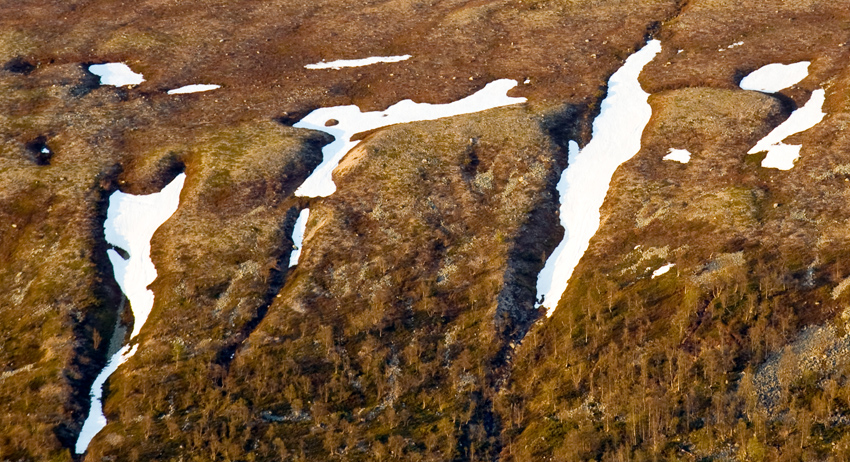 Foto: Kentaroo Tryman
Foto: Kentaroo TrymanGeology
Sonfjället is rather barren. From a distance, it looks grey and rocky. The bedrock, Vemdal quartzite, produces a coarse soil that lacks nutrients and allows almost all water to pass through it.
Few plants manage to grow in such dry and infertile soil and in what is moreover an austere, bare mountain climate.
Variable landscape
Weathering and erosion continuously changes the landscape. That is especially evident on Sonfjället.
Vemdal quartzite cracks and often is broken apart when water that has run down in cracks freezes. This is called frost erosion. Because of it, the mountain slopes in many places are covered with boulders of various sizes. People often talk about a sea of boulders, and it can be difficult to make your way through such terrain.
When frost-eroded boulders tumble down a slope, they form rockfall chutes. Boulders and rocks that collect at the foot of a slope are called talus. Sometimes the accumulations take on a cone shape and are called talus cones.
Traces of the inland ice sheet
When the ice sheet melted about 10,000 years ago, the mountaintops thawed out first. Between the thawed peaks, large rivers of meltwater rushed out. The water eroded the mountain, creating deep ravines known as col gullies.
There are col gullies between the peaks on Gråsidan and Valmfjället, between Medstöten and Korpflyet and between Korpflyet and Högfjället.
Other traces of the Ice Age are the furrows that are called drainage channels. Both drainage channels and subglacial chutes can be found on the western slopes of Gråsidan and Högfjället.
Share with your friends
Share this page with your friends on Facebook, X (formerly Twitter), Google+ and e-mail.





